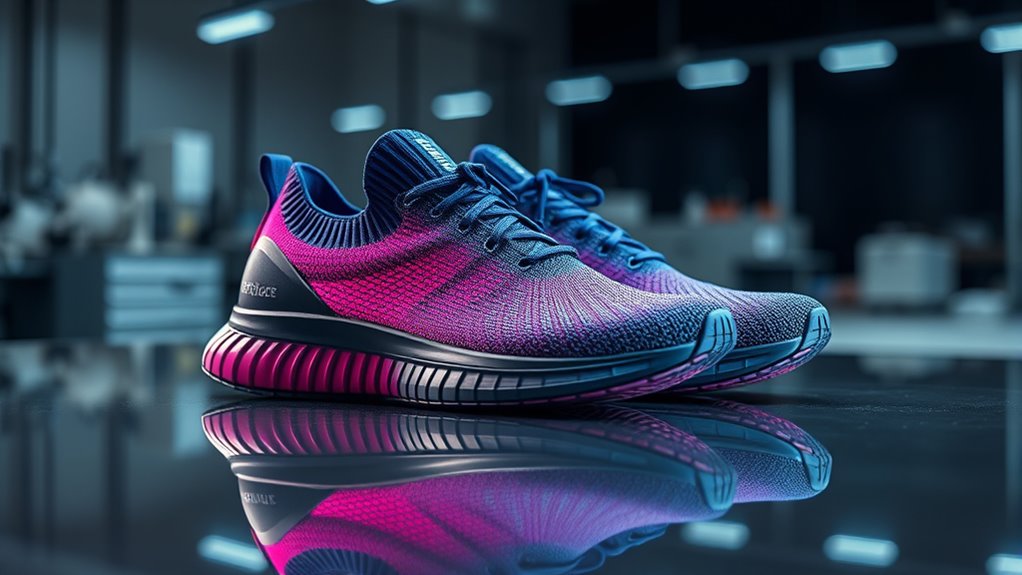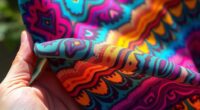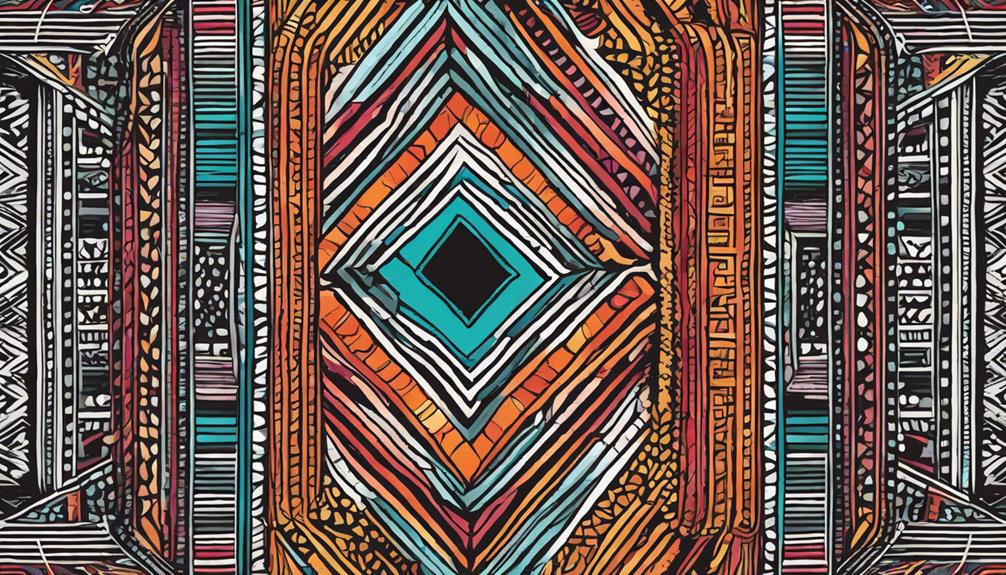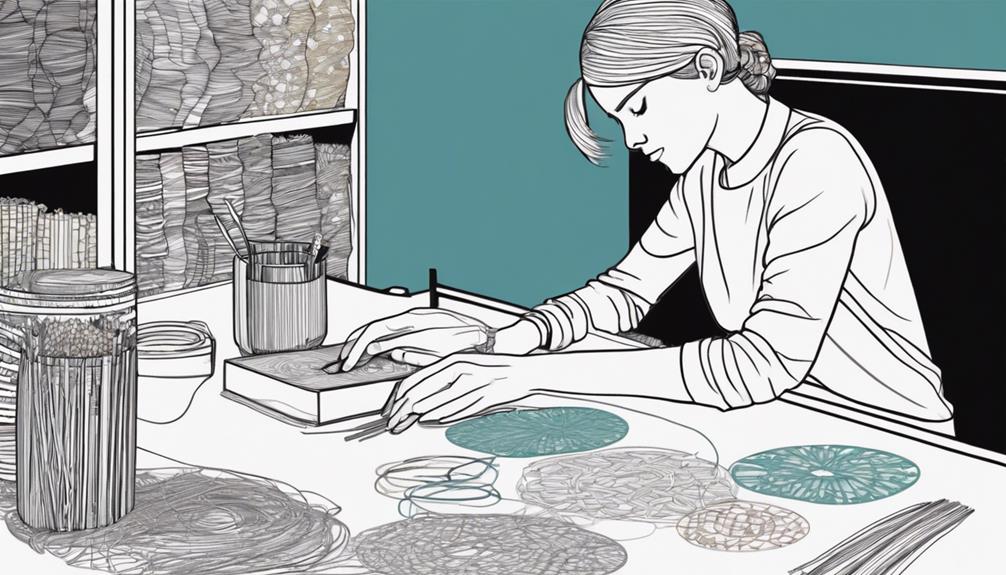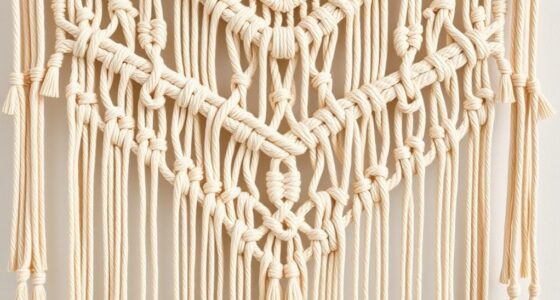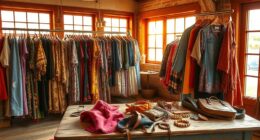3D-knitted sneakers are transforming the footwear industry by offering sustainable, customizable, and seamless designs at larger scales. You can enjoy shoes that fit better, look unique, and reduce waste thanks to on-demand production processes. As companies continue investing in this innovative technology, expect more eco-friendly and tailored options becoming available for everyone. Stay tuned, as there’s more to discover about how this exciting shift can change your footwear experience.
Key Takeaways
- 3D knitting enables on-demand, sustainable footwear production, reducing waste and excess inventory in the sneaker industry.
- Advances in automation are making large-scale, eco-friendly 3D knitted sneaker manufacturing increasingly feasible.
- The technology allows for highly personalized, seamless sneakers that enhance comfort, durability, and design flexibility.
- Growing brand adoption signals a shift toward responsible, eco-conscious sneaker manufacturing using 3D knitting.
- Continued innovation will make custom, sustainable sneakers more accessible, transforming the future of footwear business.
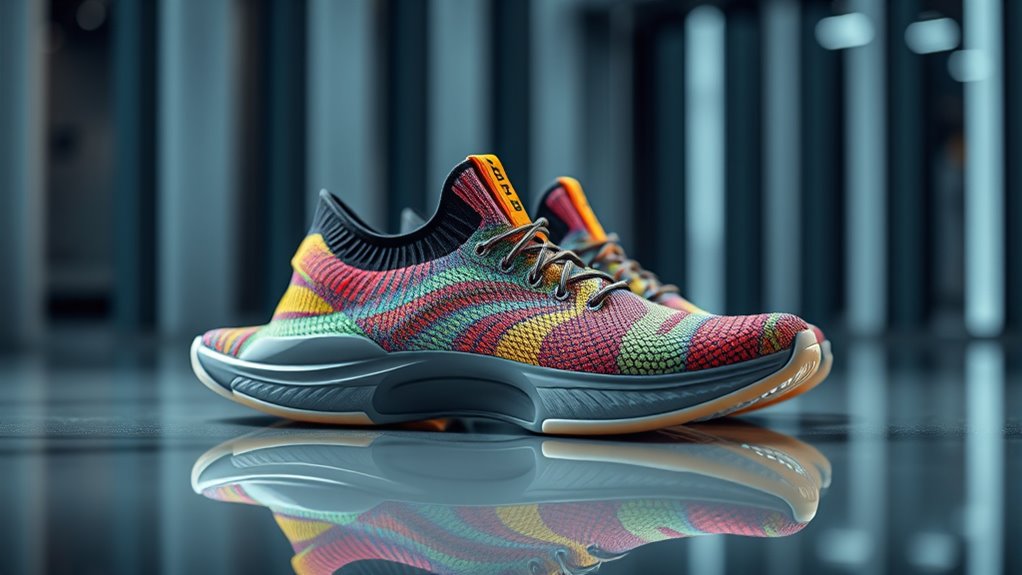
3D-knitted sneakers are revolutionizing the way we think about footwear by combining advanced technology with sustainable practices. As a consumer, you’re likely aware of the growing sustainability challenges the fashion industry faces—overproduction, waste, and resource depletion. Traditional manufacturing methods often produce excess inventory and waste, making it difficult to balance quality with eco-consciousness. 3D knitting technology addresses these issues head-on by enabling on-demand production, which reduces excess and minimizes environmental impact. This approach not only helps cut waste but also allows brands to create customized sneakers tailored precisely to your needs, eliminating the guesswork and overproduction that typically come with mass manufacturing.
However, one hurdle that’s often raised when discussing 3D-knitted sneakers is manufacturing scalability. While the technology offers incredible potential for customization and sustainability, scaling up production to meet mass-market demand can be complex. You might wonder if 3D knitting can truly replace traditional manufacturing or if it’s limited to niche markets. The reality is, advances in machinery and process automation are making it increasingly feasible to scale. Industry leaders are investing heavily in expanding their production capabilities, enabling faster and more efficient output without sacrificing quality or sustainability benefits. As a consumer, you benefit from that progress because it means more accessible, eco-friendly footwear options that are tailored to your preferences.
Moreover, 3D knitting allows for intricate designs and precise material placement, which enhances the durability, comfort, and performance of your sneakers. Instead of relying on multiple parts stitched together, a single seamless piece can be produced, reducing waste and potential weak points. This seamless construction not only improves durability but also offers a more comfortable fit, personalized to your foot’s contours. With the ability to customize every aspect—from color schemes to support zones—you get a product that genuinely fits your lifestyle and aesthetic preferences. This level of personalization was previously only available through bespoke shoemaking, but now it’s more accessible and sustainable.
As the technology matures and manufacturing processes become more scalable, you’ll likely see more brands adopting 3D knitting for their core offerings. It’s a step toward a future where footwear is made responsibly, with less environmental impact, and tailored specifically for you. Ultimately, 3D-knitted sneakers aren’t just a trend—they’re a game-changer in how we think about sustainable, custom footwear. With ongoing innovations addressing manufacturing scalability, this technology promises to deliver eco-friendly, perfectly fitting sneakers to a broader audience, redefining what it means to wear shoes built for the future. The use of cookies in website analytics ensures continuous improvements and customization options that enhance user experience.
Frequently Asked Questions
How Durable Are 3d-Knitted Sneakers Compared to Traditional Shoes?
You might wonder how durable 3D-knitted sneakers are compared to traditional shoes. Generally, they offer good material longevity and wear resistance, especially because they’re made with innovative, high-quality materials. However, their durability can vary depending on usage and the specific knit design. While some models withstand daily wear well, others may need replacement sooner. Overall, they can be quite durable but might not match the long-term wear resistance of some traditional shoes.
Can 3d-Knitted Sneakers Be Recycled or Sustainably Disposed Of?
You might wonder if 3D‑knitted sneakers can be recycled or disposed of sustainably. While they often use eco-friendly materials, recycling challenges still exist due to complex structures and mixed materials. To reduce environmental impact, you should look for brands that design with recyclability in mind and support programs for proper disposal. This way, you help minimize waste and promote a more sustainable footwear industry.
What Is the Typical Production Time for a Pair of 3d-Knitted Sneakers?
Imagine you order a pair of personalized 3D-knitted sneakers, and within 48 hours, they’re ready. Typically, the production speed for a pair ranges from one to three days, thanks to the streamlined customization process. This rapid turnaround allows you to get shoes tailored to your style quickly, making 3D knitting an efficient choice for custom footwear. You’ll love how fast and personalized your new sneakers can be.
Are 3d-Knitted Sneakers Suitable for All Foot Types and Sizes?
You might wonder if 3D-knitted sneakers suit all foot types and sizes. The good news is they offer excellent sizing flexibility and can be customized for different foot arch support needs. Their adaptable knit material molds to your foot, providing comfort and support. Whether you have wide, narrow, or high-arched feet, these sneakers can often be tailored to fit perfectly, making them a versatile choice for many users.
How Does the Cost of 3d-Knitted Sneakers Compare to Conventional Footwear?
You might wonder how the cost of 3D-knitted sneakers compares to conventional footwear. Generally, the cost comparison shows that 3D-knitted shoes can be more expensive due to higher manufacturing expenses, like advanced technology and materials. However, they offer customization benefits that might justify the price for some. Over time, as the technology becomes more widespread, manufacturing expenses could decrease, making 3D-knitted sneakers more affordable for everyone.
Conclusion
Step into the future with 3D-knitted sneakers, where innovation weaves comfort and style into every thread. Imagine wearing a shoe that’s as unique as your fingerprint, crafted just for you—like a second skin, shaping your journey ahead. These sneakers aren’t just footwear; they’re a symbol of endless possibilities, a canvas of your individuality. Embrace this new chapter, where technology meets personal expression, and walk confidently into a world of limitless potential.

